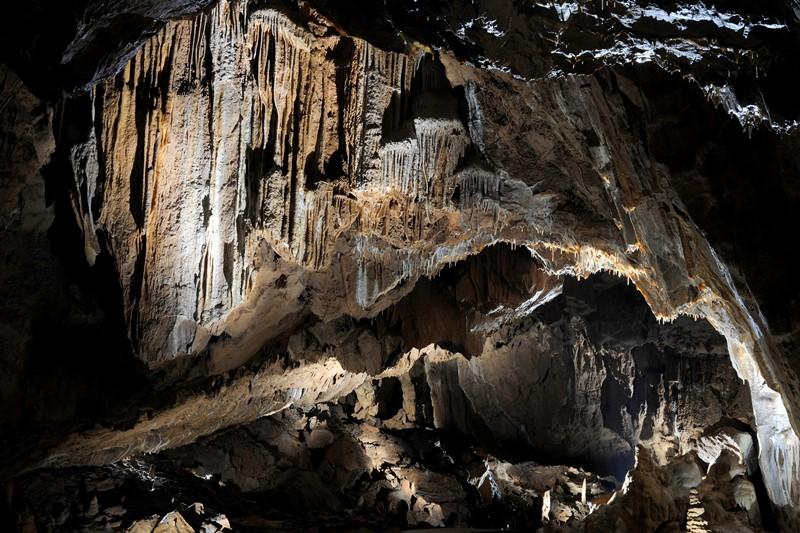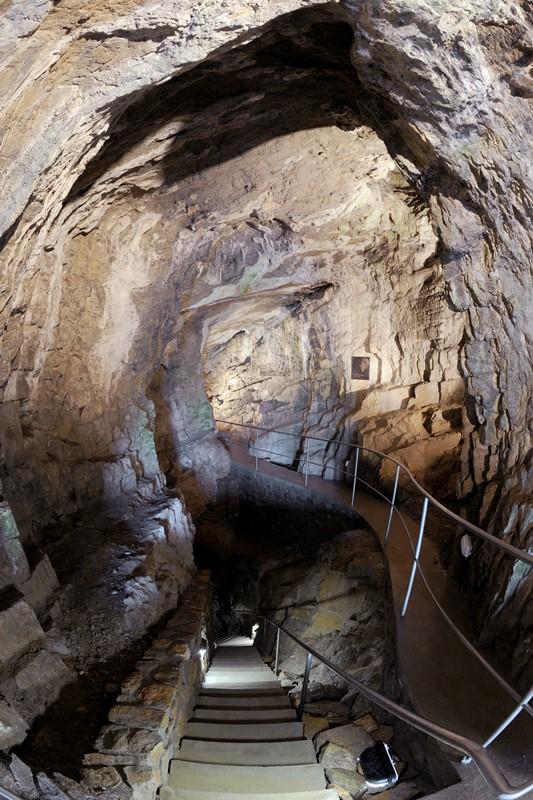Balcarka Cave - characteristics

MORAVIAN KARST
It is the largest and most important karst region in the Czech Republic. It is situated north of Brno as a part of the Drahanská Highlands with an area of 100 km2 of Devonian limestones (width 3–5 km, length 25 km). Due to its hydrographic conditions, it is divided into the northern segment – the Punkva River System, the middle segment – the Křtinský and Jedovnický Brook System and the southern segment, the Říčka River System.
BALCARKA CAVE
-

The cave is situated in the northern part of the Moravian Karst, in the picturesque part of the Canyon of Suchý Žleb near Ostrov u Macochy in the nature reserve called Balcar Rock – Vintoky.
-
It is a labyrinth of cave passages, chambers and abysses on three height levels.
-
The cave is richly decorated with various colorful stalactites and stalagmites.
-
The entrance portal of the cave portal has been known since long ago and therefore it is also a significant paleontological and archaeological site.
-
The complex of passages and chambers was discovered little by little from 1923 to 1948.
-
The total length of spaces known today is up to 1150 meters with denivelation of over 40 m.
-
The cave tour is 600 m long.
-
Tour duration: 45 min.
-
Air temperature: 7–8°C (46°F), relative humidity: ca. 99 %
Evolution of the Caves
DEVELOPMENT OF THE BALCARKA CAVE
In total, there are more than 1,100 caves and abysses in the Moravian Karst. They were formed by gradual erosion and corrosion activities of atmospheric water and its subterranean streams in tectonically disturbed and relatively soluble layers of limestones.
Regarding its development, the Balcarka Cave belongs to the complex hydrographic system of the Ostrov-Vilémovice waters now springing from Malý výtok (Little Discharge) near the Punkva Caves. The cave development was already initiated in periods before the Badenian flooding, probablyin the early Tertiary. Near the boundary of limestones and non-karstic Culm rocks it formed a ponor of so-called Ostrov waters (today’s Krasovský and Lopač brooks). It was predominantly their scour activity and subsequent collapses of ceilings and walls that caused the formation of a labyrinth of corridors and chambers with several levels.
After the Badenian flooding, distinct changes in hydrological conditions in the whole Moravian Karst occurred and the Ostrov waters started to cut their way in the deeper levels of the Suchý žleb Valley towards today’s seepages of the Punkva River.
In spite of their efforts, speleologists did not succeed in getting into the main spaces of this supposed system.